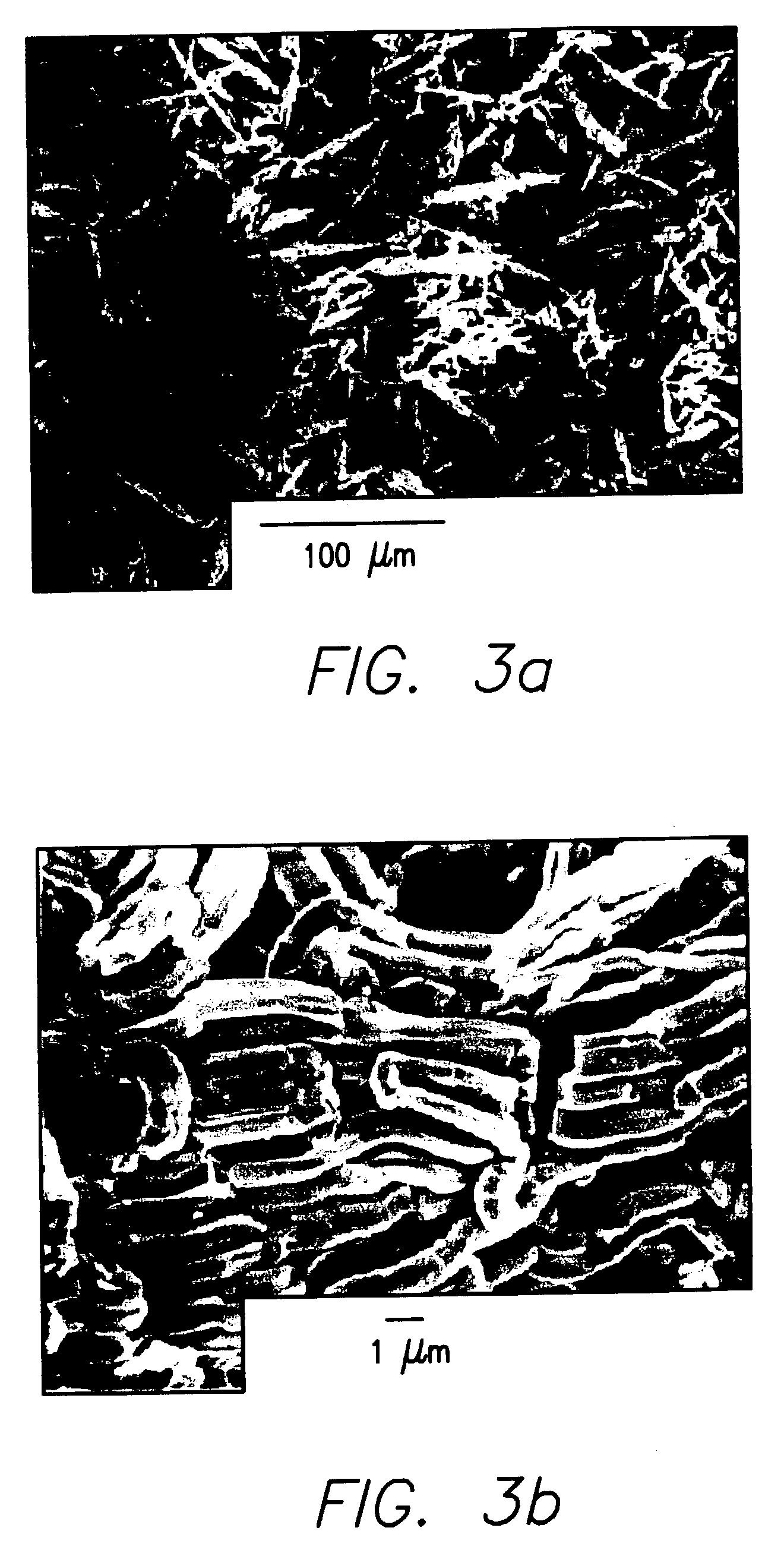Block copolymer processing for mesostructured inorganic oxide materials
a technology of inorganic oxide materials and copolymer processing, which is applied in the direction of alkali metal oxides/hydroxides, aluminium oxides/hydroxides, ion exchange treatment of water/sewage, etc., can solve the problems of relatively poor thermal stability, and significant hinderance of applications, and achieves large surface area and high bet surface area
- Summary
- Abstract
- Description
- Claims
- Application Information
AI Technical Summary
Benefits of technology
Problems solved by technology
Method used
Image
Examples
Embodiment Construction
[0081]This invention provides a simple and general procedure for the syntheses of ordered large-pore (up to 14 nm) mesoporous metal oxides, including TiO2, ZrO2, Nb2O5, Ta2O5, Al2O3, SiO2, WO3, SnO2, HfO2 and mixed oxides SiAlO3.5, SiAlO5.5, Al2TiO5, ZrTIO4, SiTiO4. Commercially available, low-cost, non-toxic, and biodegradable amphiphilic poly(alkylene oxide) block copolymers can be used as the structure-directing agents in non-aqueous solutions for organizing the network forming metal species. Preferably the block copolymer is a triblock copolymer in which a hydrophilic poly(alkylene oxide) such as poly(ethylene oxide (EOx) is linearly covalent with the opposite ends of a hydrophobic poly(alkylene oxide) such as polypropylene) oxide (POy) or a diblock polymer in which, for example, poly(ethylene oxide) is linearly covalent with poly(butylene oxide) (BOY). This can variously be designated as follows:
[0082]poly(ethylene oxide)-poly(propylene oxide)-poly(polyethylene oxide)
[0083]HO(C...
PUM
| Property | Measurement | Unit |
|---|---|---|
| Temperature | aaaaa | aaaaa |
| Temperature | aaaaa | aaaaa |
| Temperature | aaaaa | aaaaa |
Abstract
Description
Claims
Application Information
 Login to View More
Login to View More - R&D
- Intellectual Property
- Life Sciences
- Materials
- Tech Scout
- Unparalleled Data Quality
- Higher Quality Content
- 60% Fewer Hallucinations
Browse by: Latest US Patents, China's latest patents, Technical Efficacy Thesaurus, Application Domain, Technology Topic, Popular Technical Reports.
© 2025 PatSnap. All rights reserved.Legal|Privacy policy|Modern Slavery Act Transparency Statement|Sitemap|About US| Contact US: help@patsnap.com



